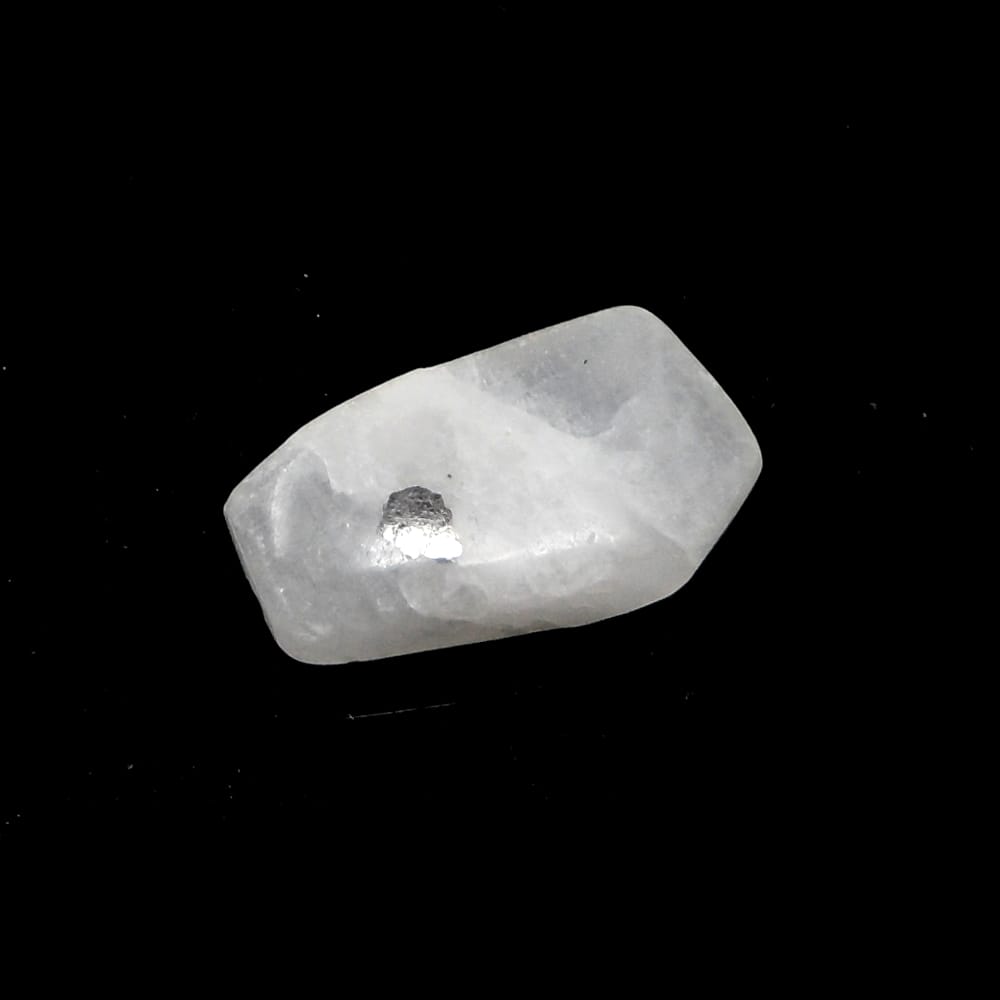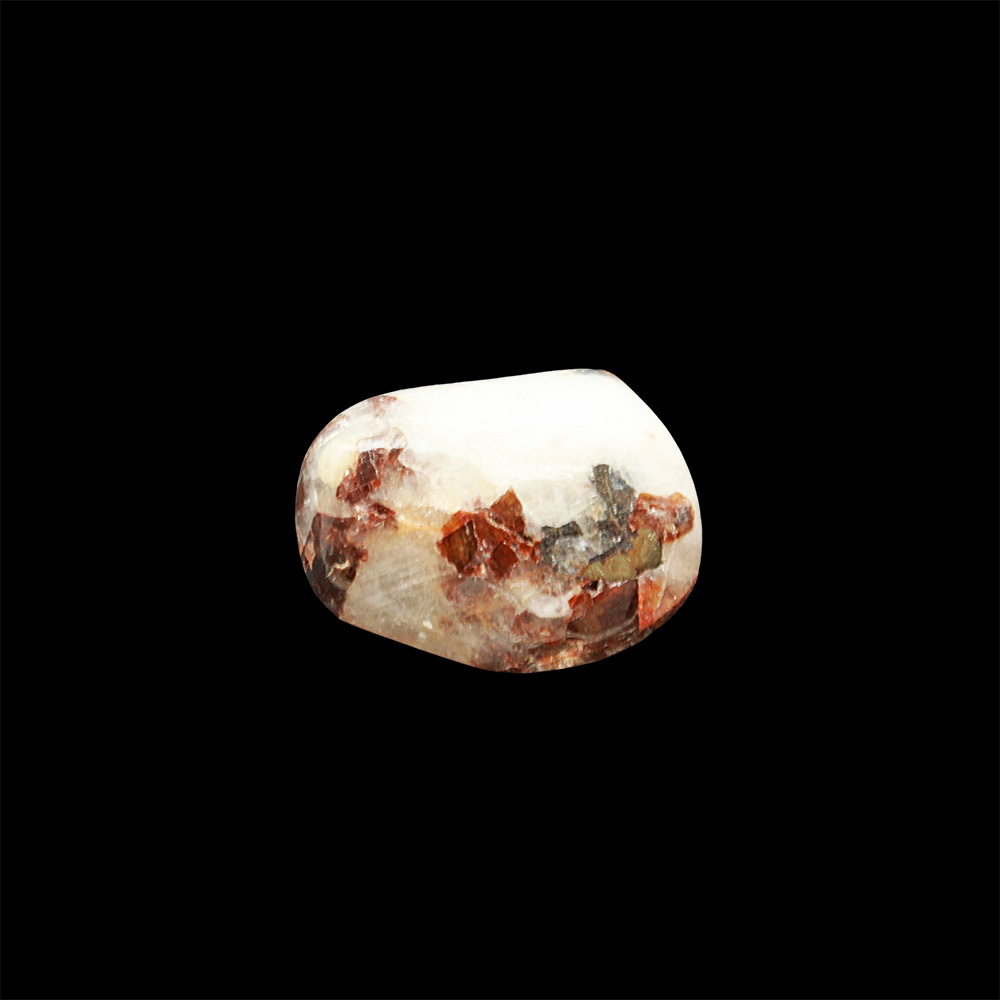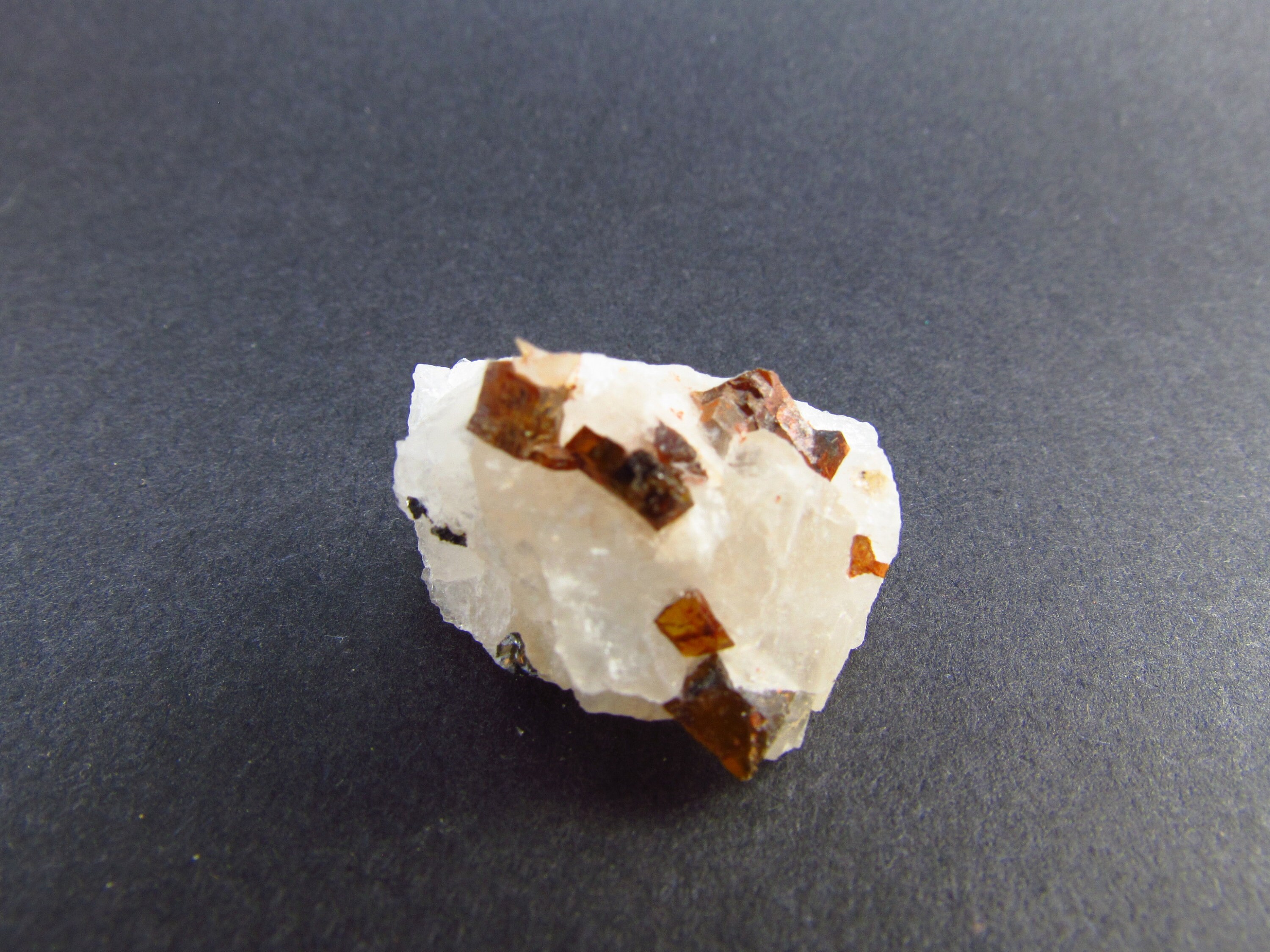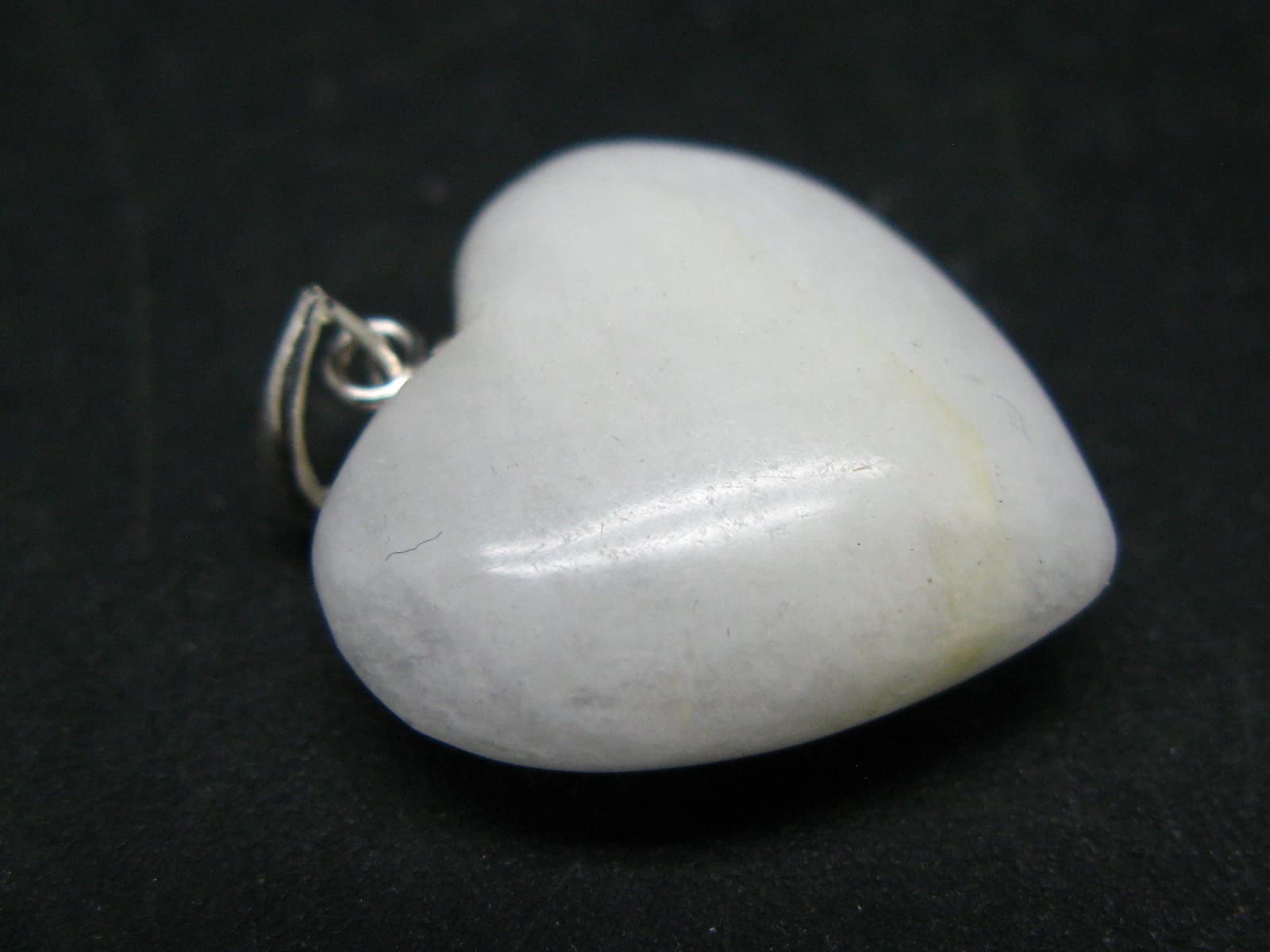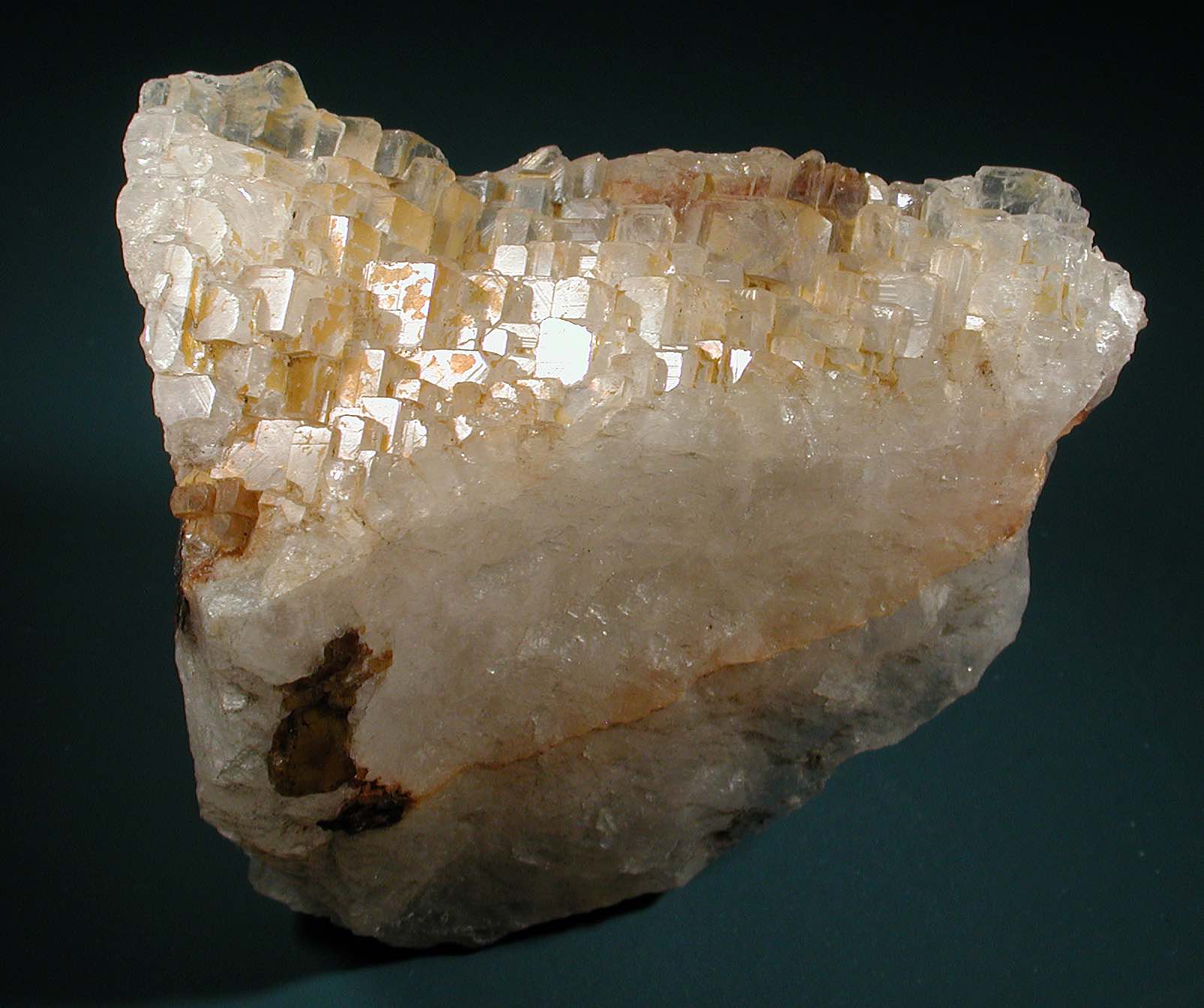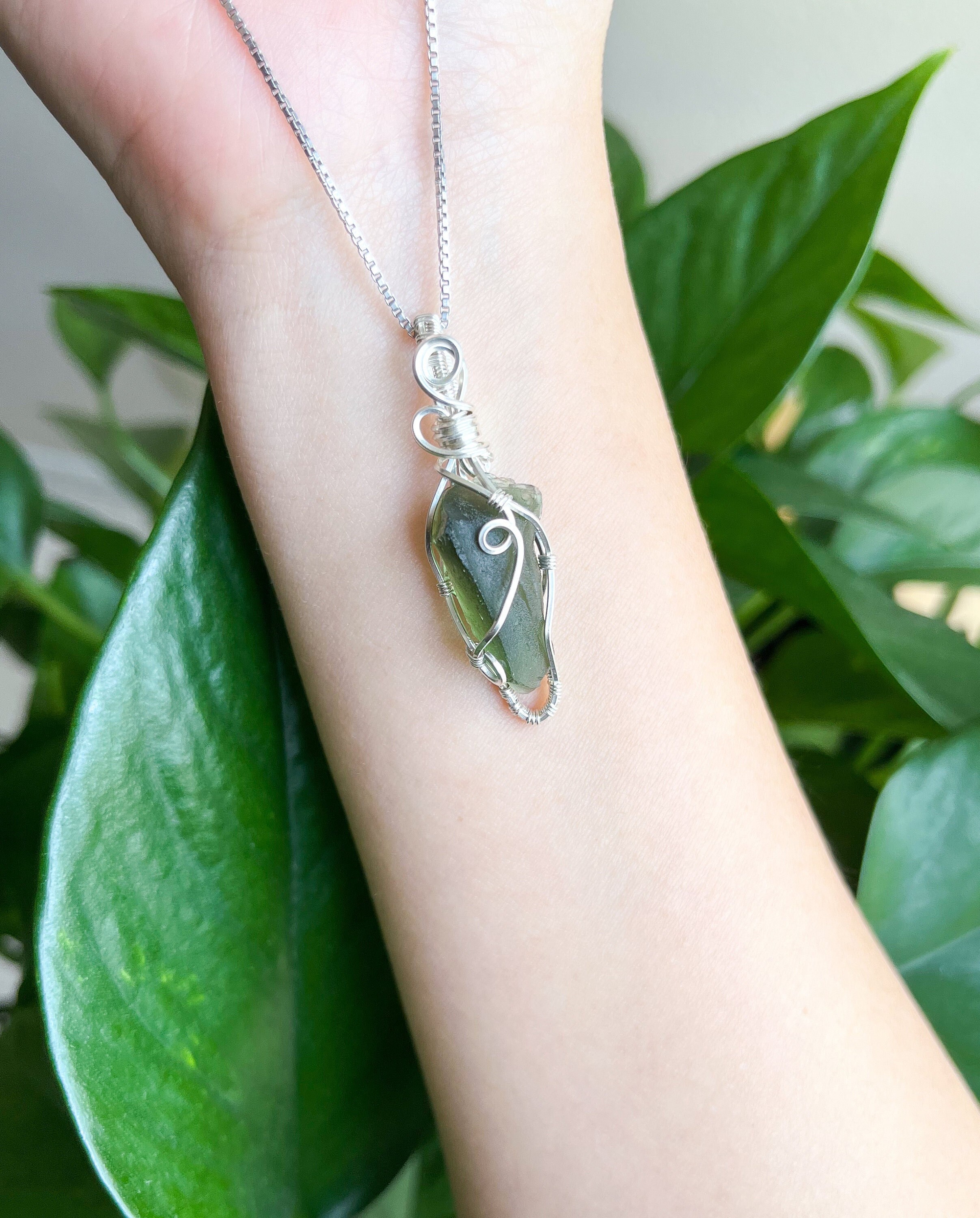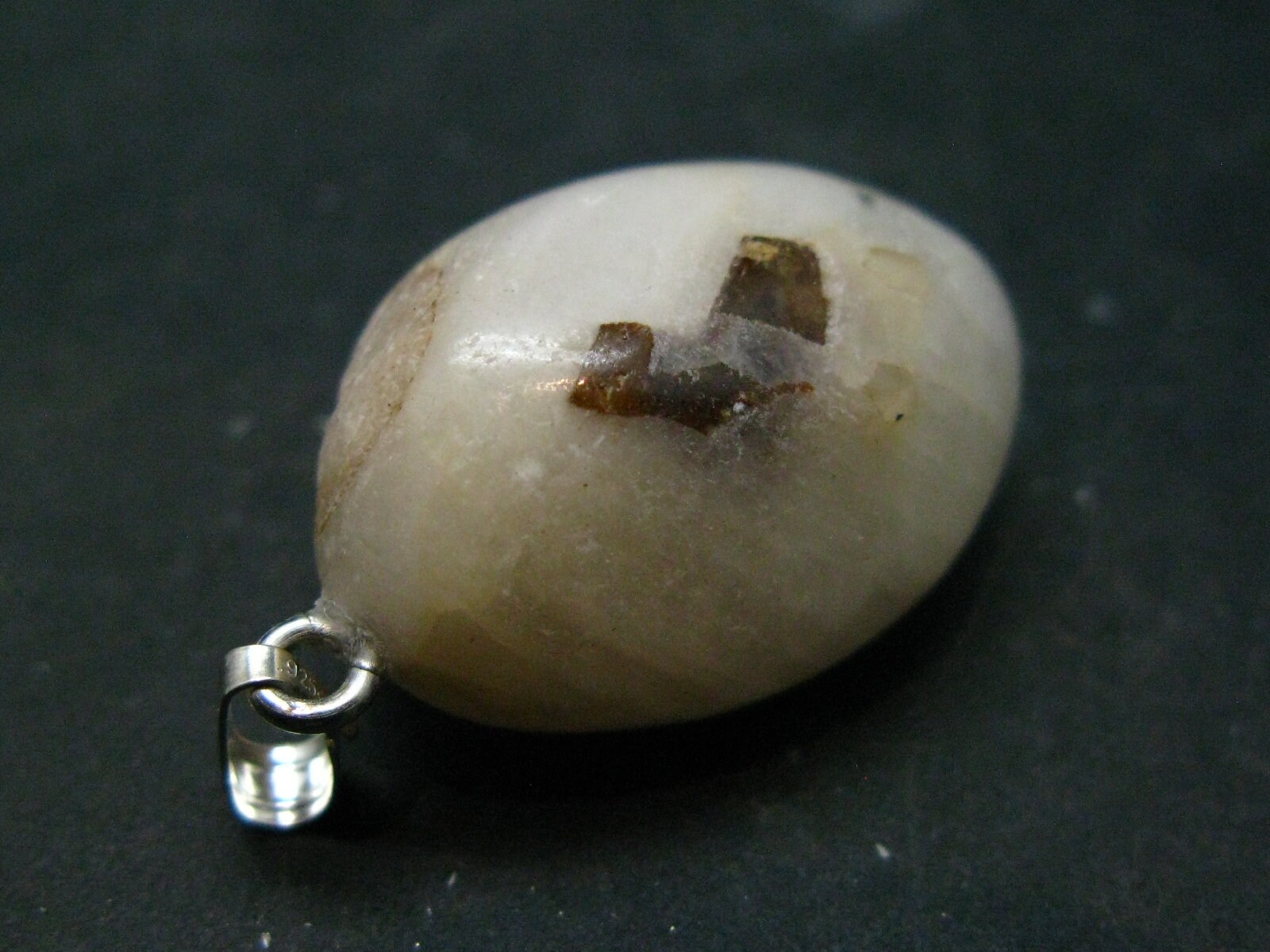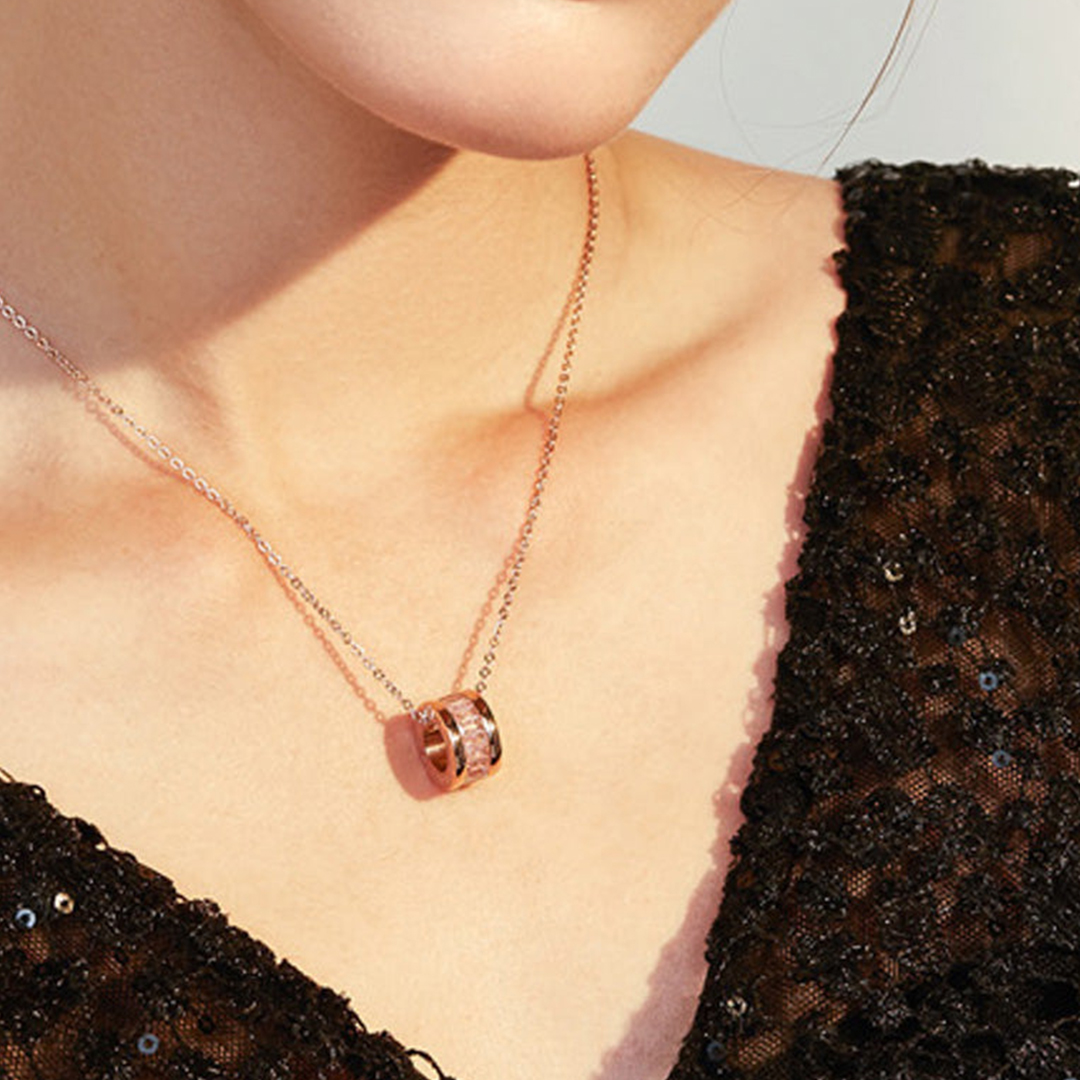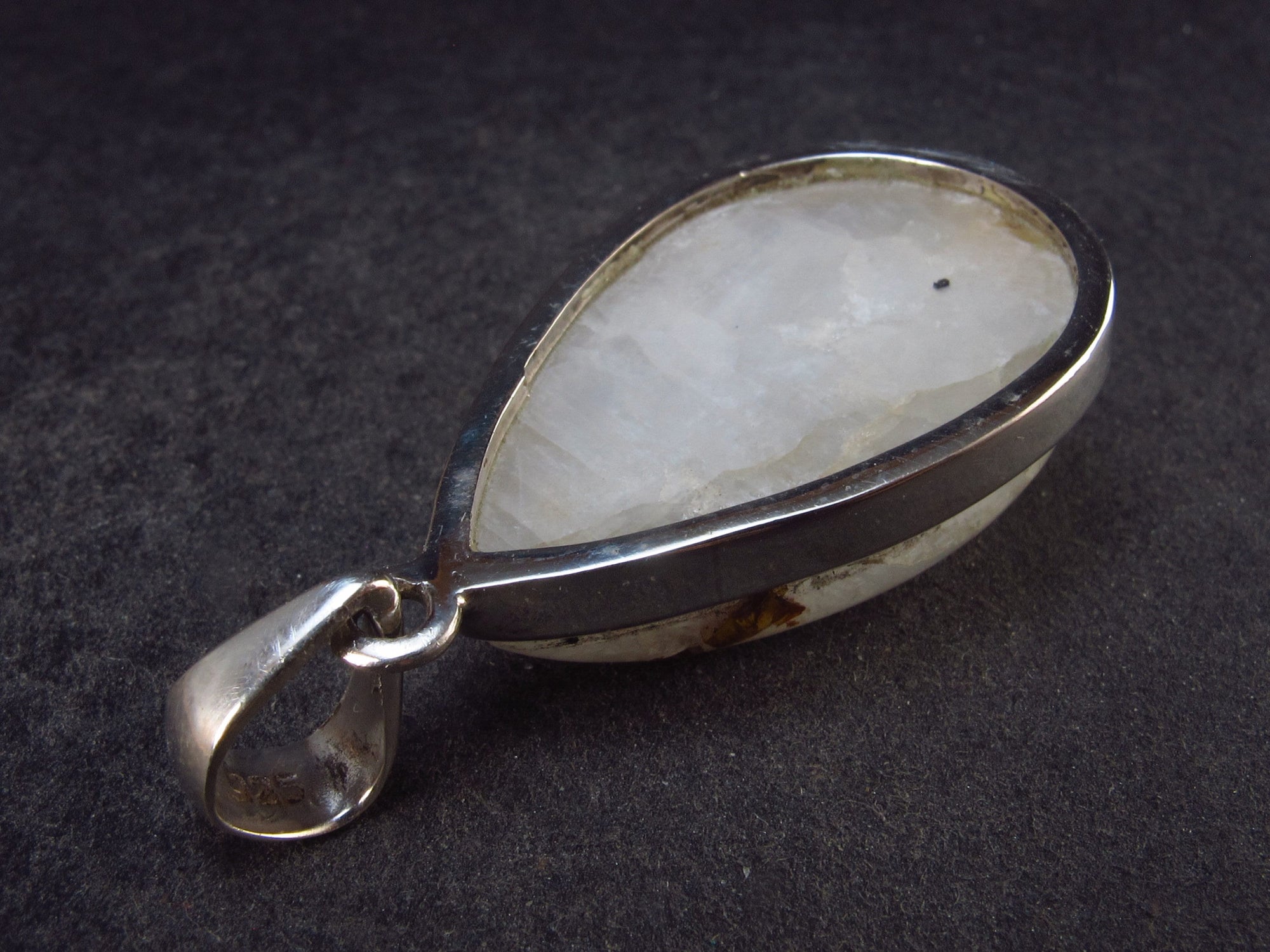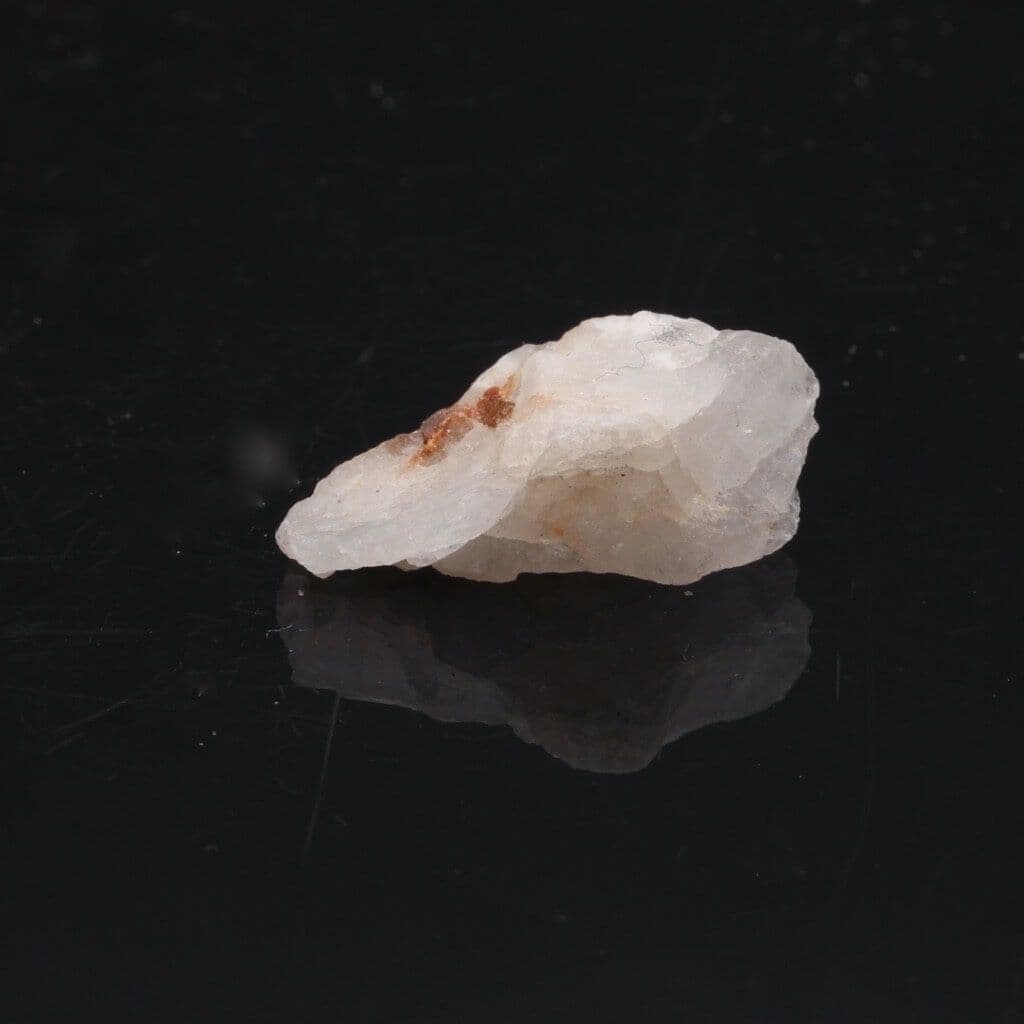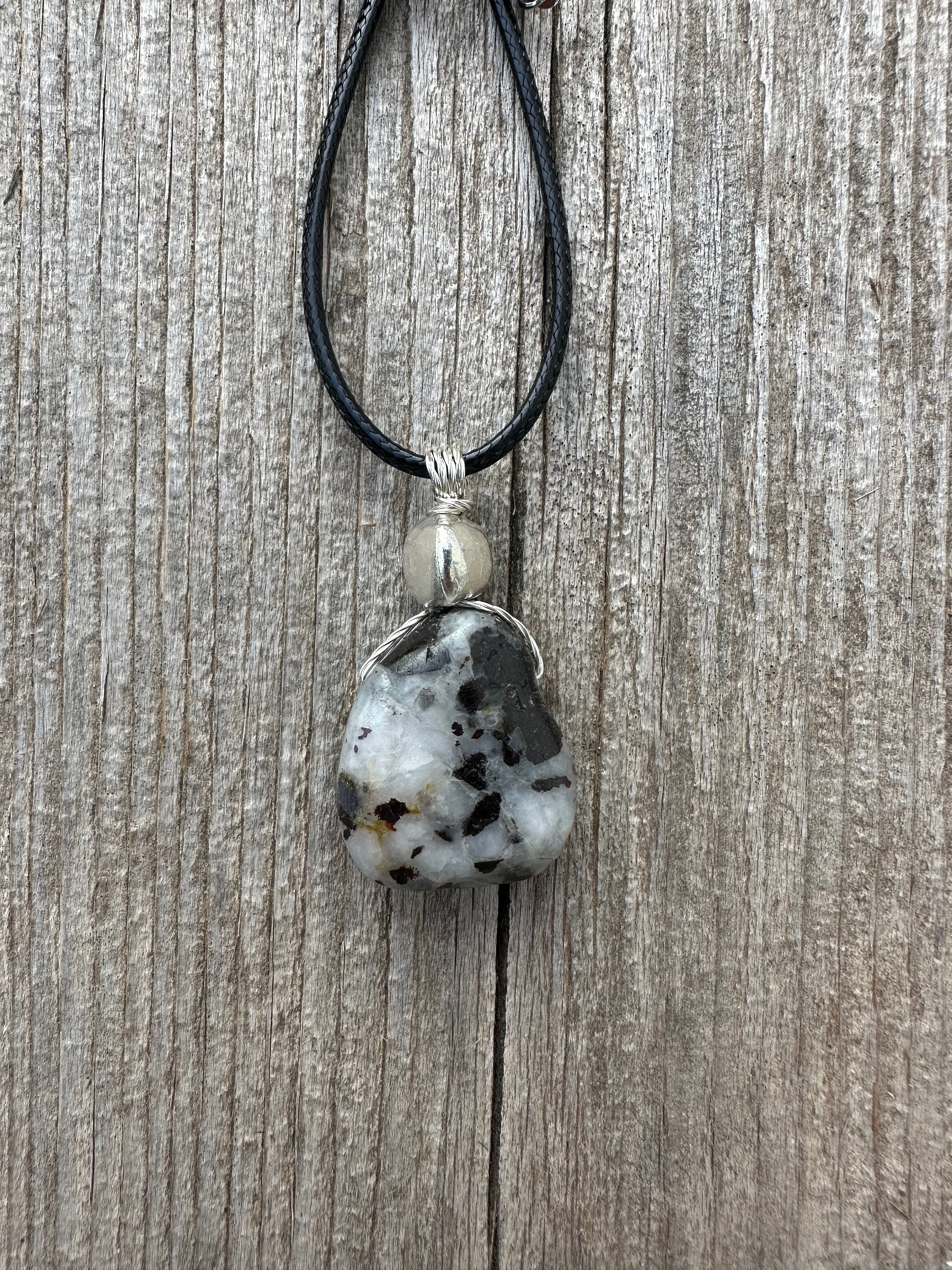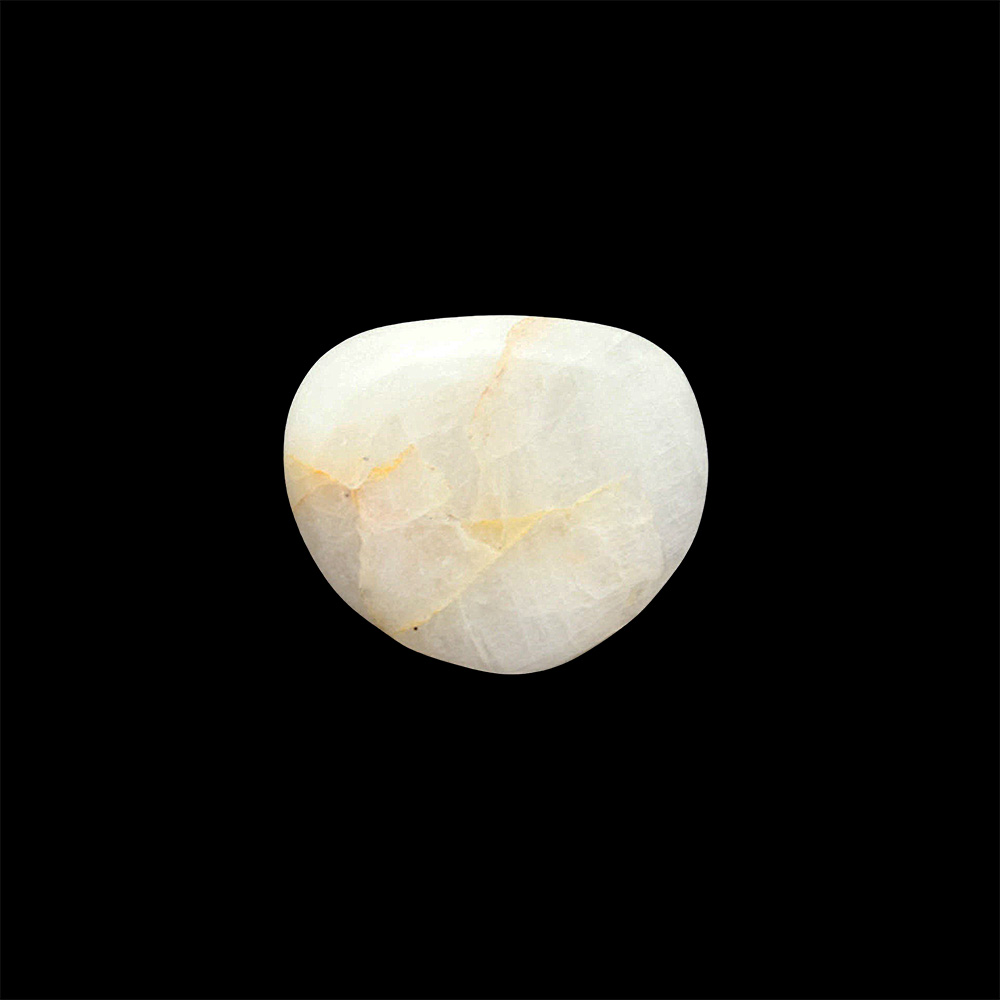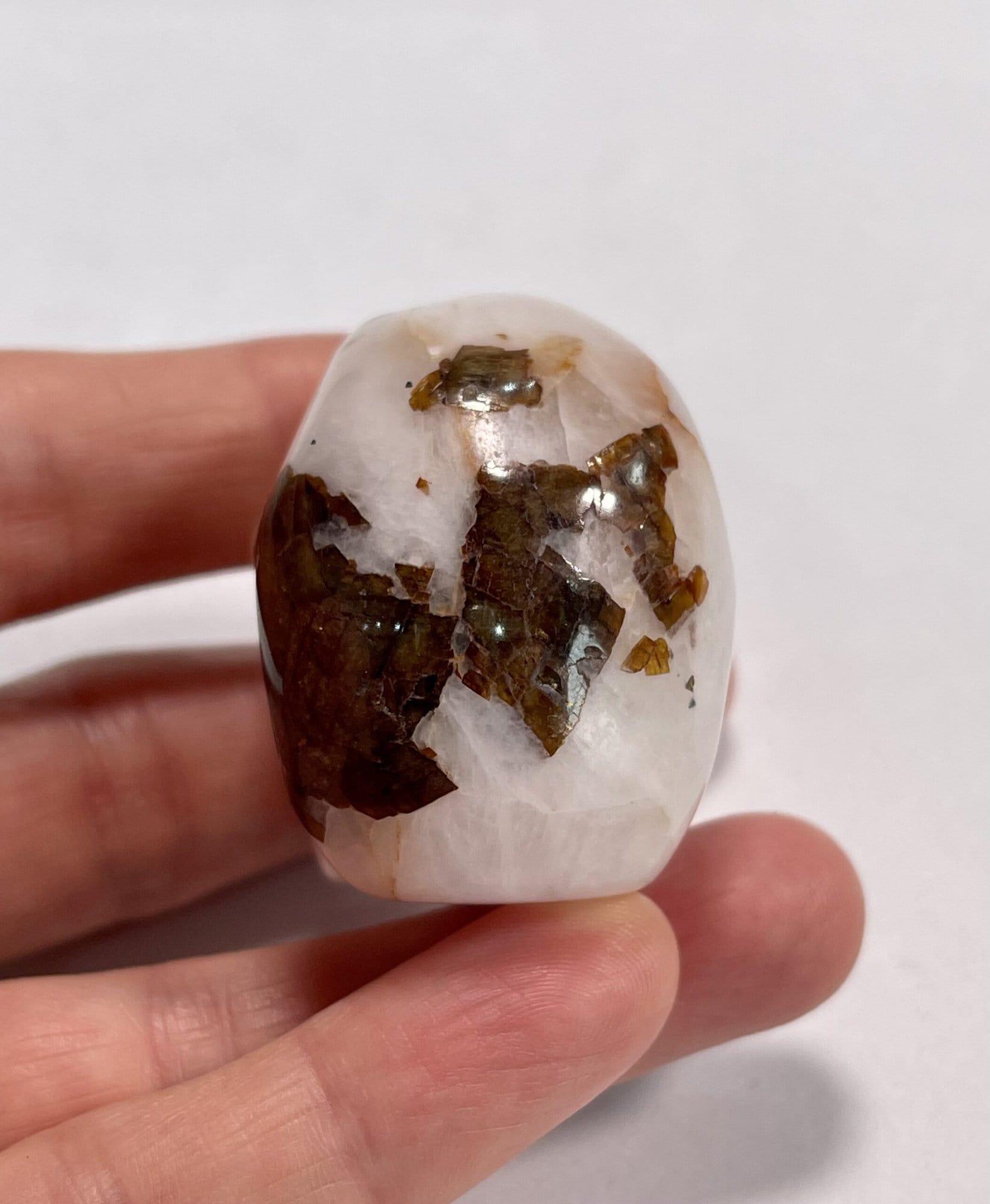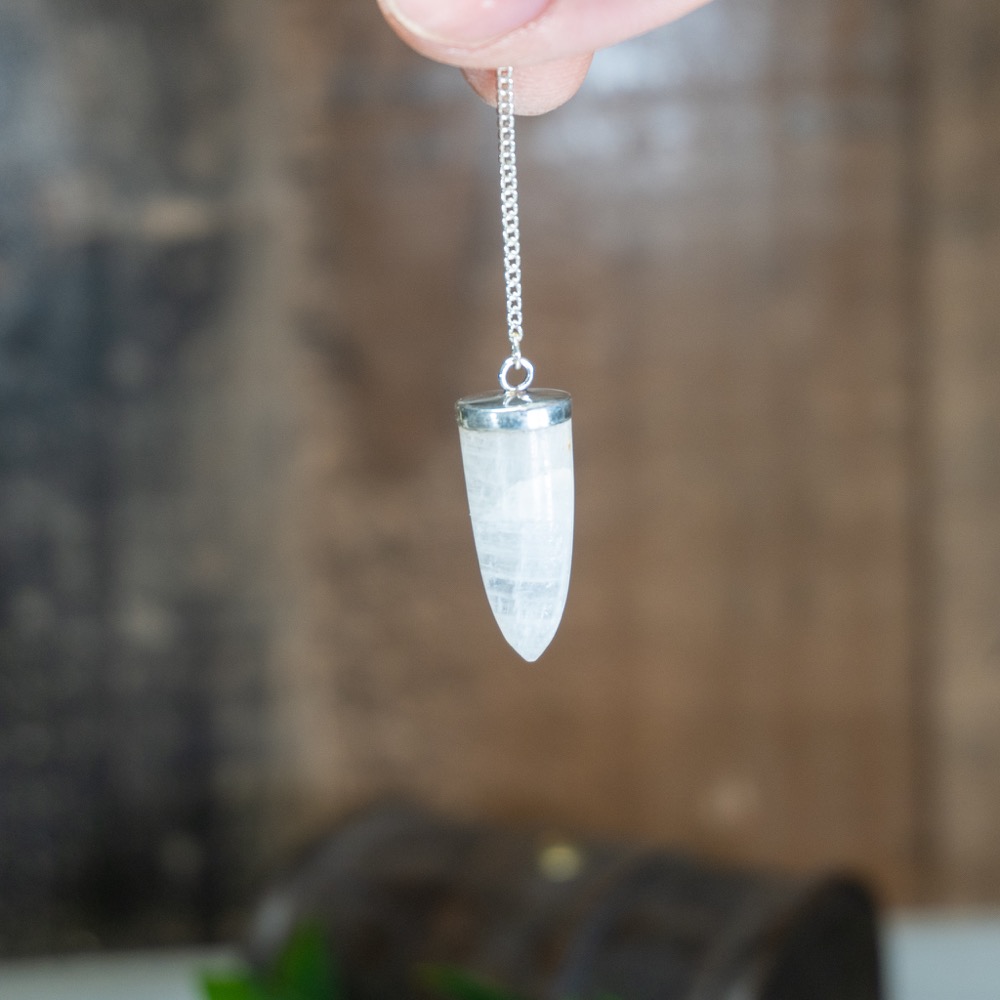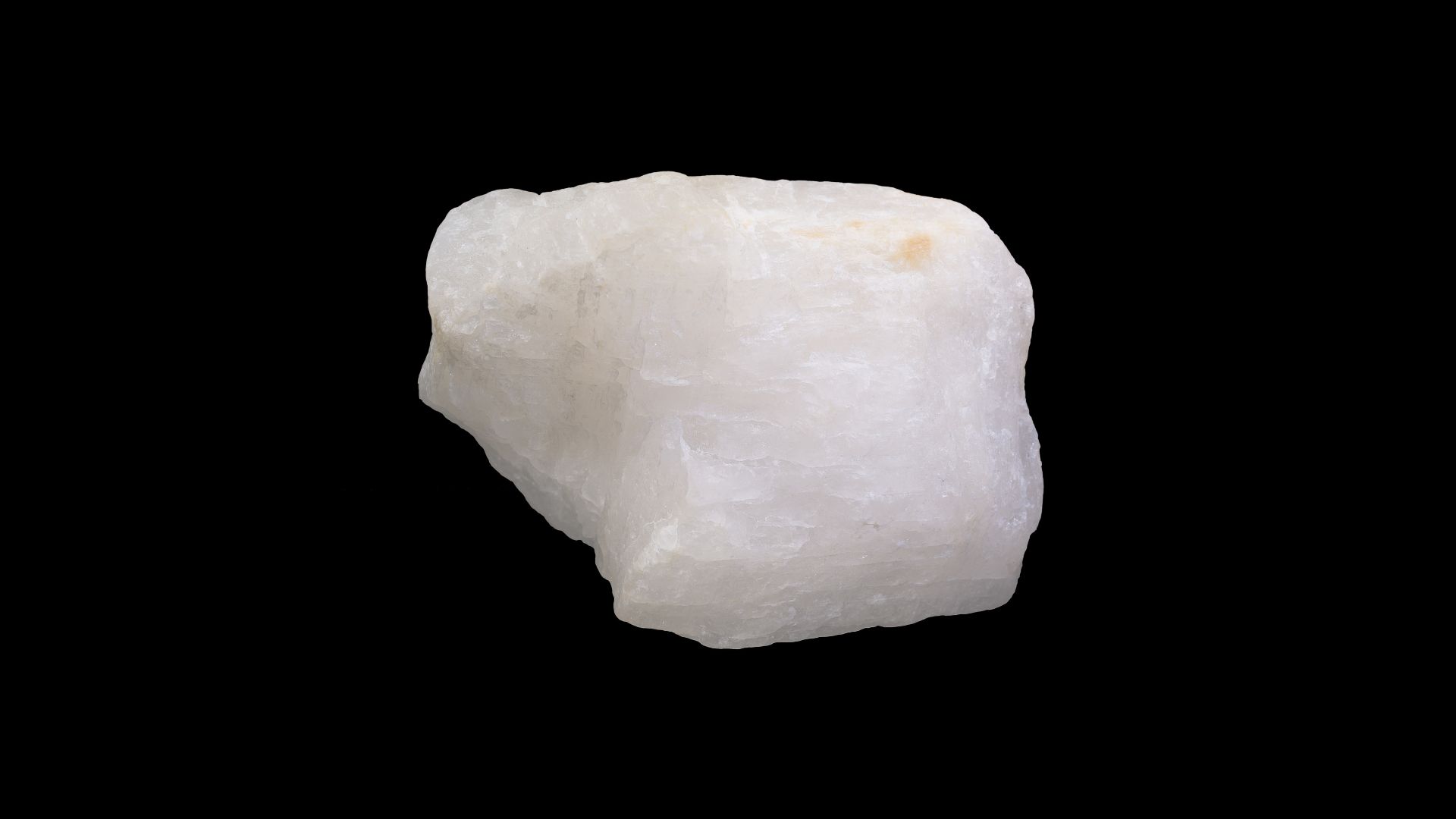
Nestled within the realms of mineralogical wonders lies the enigmatic cryolite crystal. Its name, derived from the Greek words "kruos," meaning frost, and "lithos," meaning stone, hints at its icy allure. Cryolite crystals, composed of sodium, aluminum, and fluoride ions, possess unique properties that have captivated scientists and collectors alike for centuries.
This article embarks on a journey to unravel the fascinating intricacies of cryolite crystals, exploring their formation, properties, industrial applications, and significance in the world of mineralogy.
Cryolite Meaning & Energy
Cryolite is insightful and connects with all chakras, particularly the third eye. Activating inner vision will lead to psychic powers. Prophetic dreams, spirit guide contact, lucid dreaming, astral projection, déjà vu, and ESP are all possible with passive mental enhancement. These indicate cryolite's powerful force in your soul.
As you connect with yourself, this mineral clears a conduit to your higher self. The light body is contained in this purest version of oneself. This spirit embodies honesty, love, and passion. One may immediately apply their guide's teachings to their life as they connect and comprehend them.
To improve this vision and grasp the images, meditate with your Cryolite piece on your forehead. The powerful vibrations from this stone will activate the pineal gland in minutes (we've never worked with a high-vibration stone that fast).
The forehead tingling and pulsations may be too intense for outsiders. Please bring it with you every day to attune your energies to it. Give yourself time to adjust to this stone's passive vibrational boost. Insert cryolite into your deep meditation regimen and watch this miraculous mineral come alive.
What Is Cryolite Crystal Used For?
The industrial usage of cryolite for processing aluminum has all but disappeared. It's helpful in making aluminum oxide more conductive and for lowering its melting point.
As a filler, it benefits the ceramics, glass, and enamel sectors while increasing fluidity in the welding sector. The production of pesticides also makes use of cryolite.
Certain healers use cryolite as an aid in the treatment of ocular illnesses. A high awareness stone has been identified. It is an excellent meditation stone due to its intense vibrations.
A Brief History Of Cryolite Crystals - From Discovery To Industrial Marvel
Let us discuss the history of cryolite crystals.
Ancient Origins - Cryolite's Serendipitous Discovery
Cryolite's story began in the early 18th century when it was first discovered in Greenland's Ivittuut region. The credit for its initial identification goes to Danish mineralogist Hans Oersted in 1810.
Intriguingly, local Inuit populations had been utilizing this translucent mineral long before its formal recognition by the scientific community, using it to fashion tools and weapons.
The Early Industrial Revolution - Cryolite's Emergence As A Crucial Flux
During the 19th century, as the Industrial Revolution gained momentum, cryolite found its niche in the burgeoning aluminum industry. Its remarkable ability to lower the melting point of alumina revolutionized aluminum extraction, making it a pivotal component in the production process. This newfound role catapulted cryolite into the limelight of industrial chemistry.
Greenland's Dominance - Ivittuut As The Epicenter Of Cryolite Mining
Ivittuut, Greenland, emerged as the primary source of cryolite, becoming a cornerstone of global supply. This small Arctic town became synonymous with cryolite production, and its mines were the epicenter of the world's cryolite industry for over a century.
The American Era - Cryolite's Transition To Synthetic Production
As demand for cryolite surged in the early 20th century, particularly in the United States, researchers sought to reduce dependence on Greenland's finite deposits. This drive led to the development of synthetic cryolite, a chemically identical alternative manufactured through a series of chemical processes. This innovation marked a significant milestone in cryolite's history, providing a sustainable solution for industries worldwide.
Environmental Concerns - Balancing Industry And Conservation
In recent decades, environmental awareness has brought to light the ecological impact of cryolite mining. Efforts have been made to implement sustainable mining practices and explore recycling options to mitigate the environmental footprint associated with its extraction. These endeavors reflect an evolving understanding of the need to balance industrial progress with environmental responsibility.
Modern Applications - Cryolite's Diverse Industrial Utility
Today, cryolite continues to play a pivotal role in various industries. Its applications span from the production of aluminum to glassmaking, ceramics, and specialized chemicals. The versatility and unique properties of cryolite ensure its continued relevance in the modern industrial landscape.
Properties Of Cryolite Crystals
Cryolite crystals possess a range of distinctive properties that make them intriguing and valuable to various industries. Here are the critical properties of cryolite crystals.
Translucence And Coloration
Cryolite crystals typically exhibit a high degree of translucence, allowing light to pass through them. Their coloration ranges from colorless to various shades of green, depending on impurities and mineral inclusions.
Crystal Structure
Cryolite possesses a monoclinic crystal structure characterized by three unequal axes and a unique arrangement of sodium, aluminum, and fluoride ions within its lattice.
Mohs Hardness
On the Mohs scale of mineral hardness, cryolite ranks at approximately 2.5 to 3. This relatively low hardness makes it susceptible to scratching and limits its use in specific applications.
Specific Gravity
The specific gravity of cryolite typically ranges from 2.95 to 3.0, indicating that it is denser than water. This property aids in its separation from other minerals during mining processes.
Cleavage And Fracture
Cryolite crystals exhibit poor cleavage in one direction and may fracture irregularly. This property influences how the mineral breaks when subjected to external forces.
Optical Characteristics
Cryolite is known for its vitreous to pearly luster, giving it a glassy or slightly iridescent appearance. Its refractive index is approximately 1.34, contributing to its optical properties.
Thermal Stability
One of the remarkable properties of cryolite is its high thermal stability. It can withstand extremely high temperatures without undergoing significant structural changes, making it invaluable in metallurgical processes.
Electrical Conductivity
Cryolite exhibits some degree of electrical conductivity, a property that contributes to its role in various industrial applications, especially in the production of aluminum.
Chemical Stability
Cryolite is relatively chemically stable, but strong acids can slowly attack it. This property allows it to endure harsh industrial environments without rapid degradation.
Solubility
In water, cryolite is sparingly soluble. Its solubility increases at higher temperatures, but it remains relatively insoluble under ambient conditions.
Fluorescence
Some cryolite crystals exhibit fluorescent properties when exposed to ultraviolet light, emitting a distinctive glow. This characteristic adds to their allure in mineral collections.
Radioactivity
Natural cryolite is not typically radioactive, making it safe for handling and use in industrial processes. However, it's essential to note that some specimens may contain trace radioactive elements as impurities.
10 Exceptional Types Of Cryolite Crystals
Let us discuss the exceptional types of cryolite crystals.
Greenlandite Cryolite
Originating from the historic Ivittuut mines in Greenland, this classic variety showcases a translucent, pale green hue. Its purity and historical significance make it highly sought after by collectors.
Coloradoite Cryolite
Named after its discovery in Colorado, USA, this variant is characterized by its vibrant emerald-green coloration. It is often prized for its intense color saturation and is a favorite among lapidaries.
Mont Saint-Hilaire Cryolite
Hailing from Quebec, Canada, this type of cryolite is renowned for its distinctive tabular crystal formations. Its rarity and complex crystal habit make it a prized specimen among connoisseurs.
Synthetic Cryolite
This artificial variant, chemically identical to natural cryolite, is produced through controlled chemical processes. Its consistent purity and availability have made it an essential component in various industrial applications.
Ivory Cryolite
Noted for its milky-white appearance, Ivory Cryolite is a unique variety found in select deposits. Its opalescent sheen and relative scarcity make it a coveted addition to mineral collections.
Lavender Cryolite
Displaying delicate lavender hues, this variant is a rare find among cryolite crystals. Its pastel coloration and distinctive beauty make it a prized gem among gemologists and collectors.
Beryllium-Enriched Cryolite
This specialized type contains traces of beryllium, imparting it with a distinctive bluish-green tint. It is particularly valued for its role in certain industrial processes requiring specific trace elements.
Fluorapatite-Infused Cryolite
Cryolite crystals occasionally host inclusions of fluorapatite, creating a unique interplay of colors and textures. These specimens are sought after for their captivating visual appeal and geological interest.
Tundrite Cryolite
Named after Tundra, Russia, this variety is characterized by its dark, almost black appearance. It stands out for its contrasting coloration within the spectrum of cryolite crystals.
Artificially Coated Cryolite
Some cryolite specimens undergo artificial treatments to enhance their aesthetic appeal. These coatings can produce iridescent or metallic sheens, adding an artistic dimension to these crystals.
Best Uses Of Cryolite Crystals
Here are the best uses of cryolite crystals.
Aluminum Production
Cryolite plays a pivotal role in the production of aluminum. It acts as a flux, reducing the melting point of alumina (aluminum oxide) during the electrolytic extraction process. It enables the efficient and cost-effective smelting of aluminum.
Glass And Ceramics Industry
Cryolite's low thermal expansion coefficient and high transparency make it a valuable component in the production of specialized glasses and ceramics. It enhances the stability and optical clarity of these materials, particularly in applications requiring precision and durability.
Metallurgy And Foundry Work
In metallurgical applications, cryolite serves as a crucial flux, aiding in the removal of impurities from metal ores. It helps control the viscosity and flow of molten metals, facilitating smoother casting processes in foundries.
Abrasive And Refractory Materials
Cryolite is utilized in the manufacture of abrasive products, such as grinding wheels and sandpaper. Its hardness and abrasive properties make it an effective material for shaping and finishing various materials, including metals.
Flux In Welding
In welding applications, cryolite acts as a flux to help remove oxides and impurities from metal surfaces. It ensures clean, solid welds and improves the overall quality of the welded joint.
Pyrotechnics And Fireworks
Cryolite crystals, when ground into a fine powder, are used in pyrotechnic compositions to produce bright and vibrant colors in fireworks displays. Its ability to emit characteristic colors when ignited adds a visually striking element to pyrotechnic performances.
Electrolytic Cells And Batteries
Cryolite's unique conductivity properties, coupled with its ability to dissolve metal oxides, make it a key component in certain types of electrolytic cells and batteries. It facilitates the movement of ions, enabling efficient energy storage and release.
Specialized Chemical Manufacturing
Cryolite is used in the production of certain chemicals and compounds, particularly those requiring fluoride ions. Its chemical reactivity and stability contribute to its utility in various chemical processes.
Fluoridation In Water Treatment
Cryolite, due to its fluoride content, has been used in water treatment processes to enhance fluoride levels in drinking water. However, this application has become less common due to environmental concerns.
Experimental And Scientific Research
Cryolite crystals have also found utility in research settings, particularly in studies related to mineralogy, crystallography, and materials science. Their unique properties make them valuable subjects for experimentation and analysis.
Why Would You Use It?
- Cryolite boosts psychic knowledge and other abilities.
- This spiritual, high-vibration gemstone affects the brain powerfully.
- One of the most potent light body awakening stones, it energizes the prefrontal cortex and third eye chakra.
- Cryolite significantly stimulates the crown, heart, and third eye chakras, aligning them.
- These three chakras together enhance your connection to the Divine mind.
- It may link you to higher entities and give you a joyful heart energy.
- The frequency of this magnificent stone often creates a deep, powerful energy in your heart that elicits profound emotions.
Cryolite Crystal Benefits
Let us discuss the benefits of cryolite crystal.
Critical Component In Aluminum Production
Cryolite is indispensable in the aluminum industry, acting as a flux to lower the melting point of alumina. It facilitates the extraction of aluminum at more manageable temperatures, significantly reducing energy consumption and production costs.
Enhanced Glass And Ceramic Properties
In the glass and ceramics industry, cryolite's low thermal expansion coefficient and high transparency contribute to the production of specialized materials. It improves stability and optical clarity, leading to the creation of high-quality glassware and ceramics.
Facilitates Metallurgical Processes
Cryolite serves as a crucial flux in metallurgical applications, aiding in the purification of metal ores. It helps control the viscosity and flow of molten metals, enabling smoother casting processes in foundries.
Efficient Grinding And Polishing Agent
In abrasive products like grinding wheels and sandpaper, cryolite's hardness and abrasive properties make it an effective material for shaping and finishing various materials, particularly metals.
Improves Welding Quality
As a flux in welding, cryolite helps remove oxides and impurities from metal surfaces. It ensures clean, solid welds and enhances the overall quality of the welded joint.
Adds Color To Pyrotechnics
Cryolite, when ground into a fine powder, is used in pyrotechnic compositions to produce vibrant colors in fireworks displays. Its ability to emit characteristic colors adds a visually striking element to pyrotechnic performances.
Contributes To Electrolytic Cells And Batteries
Cryolite's conductivity properties and ability to dissolve metal oxides make it valuable in certain types of electrolytic cells and batteries. It facilitates the movement of ions, enabling efficient energy storage and release.
Enables Specialized Chemical Manufacturing
Cryolite is a critical ingredient in the production of specific chemicals and compounds, particularly those requiring fluoride ions. Its chemical reactivity and stability contribute to its utility in various chemical processes.
Supports Fluoridation In Water Treatment
Cryolite, due to its fluoride content, has been utilized in water treatment processes to enhance fluoride levels in drinking water. However, this application has become less common due to environmental concerns.
Fosters Experimental And Scientific Endeavors
Cryolite crystals find utility in research settings, particularly in studies related to mineralogy, crystallography, and materials science. Their unique properties make them valuable subjects for experimentation and analysis, contributing to advancements in scientific knowledge.
Side Effects Of Cryolite Crystals
Let us discuss the side effects of cryolite.
Overstimulation
Cryolite is a high-vibrational crystal, and as such, it has the potential to overstimulate one's energy field, causing insomnia or nervousness.
Loss Of Vitality
If you're not properly grounded, the energy of cryolite might be too much for you and cause you to feel exhausted or sap your strength.
The Intensity Of The Feeling
Cryolite, a stone associated with the Third Eye and Throat Chakras, may amplify feelings or bring out hidden concerns.
Caring For Cryolite Crystals
Ensuring the longevity and pristine beauty of cryolite crystals requires a delicate touch and mindful care. These exquisite mineral specimens, composed of sodium, aluminum, and fluoride ions, possess a unique allure that captivates collectors and enthusiasts worldwide. Let us discuss it.
Handling With Care
Handle cryolite crystals gently to prevent scratches or damage. Use soft materials like cotton gloves or a clean cloth when handling them.
Avoid Harsh Chemicals
Refrain from using harsh chemicals or abrasive cleaning agents on cryolite crystals. Instead, clean them with mild soap and water using a soft brush or cloth.
Avoid Extreme Temperatures
Cryolite crystals are sensitive to extreme temperatures. Avoid exposing them to rapid temperature changes, as this can cause stressfractures or cracks.
Storage In A Dry Environment
Store cryolite crystals in a dry environment to prevent moisture from affecting their integrity. Consider using airtight containers or silica gel packets to absorb excess moisture.
Avoid Direct Sunlight
Prolonged exposure to direct sunlight may cause fading or alteration of colors in some cryolite crystals. Store them away from windows or use UV-filtering glass if displayed.
Regular Inspection
Periodically inspect your cryolite crystals for any signs of damage, such as chips, cracks, or changes in color. Promptly address any issues to prevent further deterioration.
Use A Soft Display Surface
If displaying cryolite crystals, use a soft surface or cushion to prevent them from scratching or getting damaged.
Avoid Chemical Exposure
Keep cryolite crystals away from chemicals, acids, and corrosive substances. They can react with the crystal and cause irreversible damage.
Refrain From Ingestion
Cryolite crystals are not intended for ingestion. They may contain substances that can be harmful if consumed. Keep them out of reach of children and pets.
Seek Professional Restoration
If a cryolite crystal becomes damaged, consider consulting a professional lapidary or mineralogist for restoration. They have the expertise to repair and restore crystals to their original condition.
FAQs About Cryolite Crystal
What Is Another Name For Cryolite?
Cryolite is Na3AlF6 sodium hexafluoroaluminate. By 1987, Greenland's west coast's Ivittuut deposit had run out of this uncommon mineral. Sodium aluminum fluoride (cryolite) is a colorless to white halide mineral.
Is Cryolite Expensive?
Cryolite, another aluminum ore, is scarce and costly, and most are chemically manufactured. The diagram displays a simple electrolysis cell.
What Color Is Cryolite Crystal?
Cryolite is glassy, colorless, white-reddish to gray-black prismatic monoclinic crystals. It has 2.95 to 3.0 specific gravity and 2.5 to 3 Mohs hardness.
What Are Some Other Applications Of Cryolite Crystal?
Cryolite crystals are used in various industries, including glassmaking, ceramics, metallurgy, and as an abrasive in grinding materials. They also find applications in pyrotechnics and specific chemical processes.
Where Is Cryolite Crystal Found?
Cryolite crystals are primarily found in the Ivittuut region of Greenland. This location has historically been the primary source of natural cryolite.
Conclusion
In the realm of mineralogy, cryolite crystal stands as a testament to nature's ingenuity. Its genesis, structure, and industrial significance offer a captivating narrative of a mineral that has shaped industries and propelled technological advancements. However, as we delve deeper into the world of cryolite, it becomes apparent that its story is not without ethical considerations.
Striking a harmonious balance between industrial progress and environmental preservation is the key to ensuring the legacy of the cryolite crystal endures for generations to come. This enigmatic gem continues to spark the curiosity of scientists, collectors, and industry leaders, leaving an indelible mark on the annals of Earth's geological wonders.
